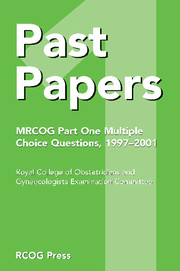Book contents
- Frontmatter
- Contents
- Introduction
- March 1997 – Paper 1
- March 1997 – Paper 2
- September 1997 – Paper 1
- September 1997 – Paper 2
- March 1998 – Paper 1
- March 1998 – Paper 2
- September 1998 – Paper 1
- September 1998 – Paper 2
- March 1999 – Paper 1
- March 1999 – Paper 2
- September 1999 – Paper 1
- September 1999 – Paper 2
- March 2000 – Paper 1
- March 2000 – Paper 2
- September 2000 – Paper 1
- September 2000 – Paper 2
- March 2001 – Paper 1
- March 2001 – Paper 2
- September 2001 – Paper 1
- September 2001 – Paper 2
- Index
March 2000 – Paper 1
Published online by Cambridge University Press: 05 July 2014
- Frontmatter
- Contents
- Introduction
- March 1997 – Paper 1
- March 1997 – Paper 2
- September 1997 – Paper 1
- September 1997 – Paper 2
- March 1998 – Paper 1
- March 1998 – Paper 2
- September 1998 – Paper 1
- September 1998 – Paper 2
- March 1999 – Paper 1
- March 1999 – Paper 2
- September 1999 – Paper 1
- September 1999 – Paper 2
- March 2000 – Paper 1
- March 2000 – Paper 2
- September 2000 – Paper 1
- September 2000 – Paper 2
- March 2001 – Paper 1
- March 2001 – Paper 2
- September 2001 – Paper 1
- September 2001 – Paper 2
- Index
Summary
1. The obturator nerve
A. is a branch of the sacral plexus.
B. emerges from the lateral border of the psoas muscle.
C. supplies the pelvic parietal peritoneum.
D. supplies the hip joint.
E. supplies the lateral side of the thigh.
2. The following are sites of anastomosis between systemic and portal veins:
A. lower third of the oesophagus.
B. sigmoid colon.
C. umbilicus.
D. terminal rectum.
E. ureters at the pelvic brim.
3. Concerning the spinal cord and its meninges:
A. The pain pathways run in the posterior columns.
B. The pathways for discriminative touch run in the posterior columns.
C. The cord in the adult terminates at the level of the third lumbar vertebra.
D. The dural sac (lumbar cistern) terminates at the level of the lumbosacral junction.
E. The anterior corticospinal tract carries uncrossed motor fibres.
4. The right ovarian artery
A. arises from the abdominal aorta above the renal artery.
B. passes posterior to the third (horizontal) part of the duodenum.
C. passes posterior to the genitofemoral nerve.
D. supplies the right ureter.
E. anastomoses with the right uterine artery.
5. The ureter
A. is supplied in part by the ovarian artery.
B. lies lateral to the transverse processes of the lumbar vertebrae.
C. passes above the genitofemoral nerve.
D. is lined by a simple columnar epithelium.
E. passes below the uterine artery.
- Type
- Chapter
- Information
- Past Papers MRCOG Part One Multiple Choice Questions1997–2001, pp. 121 - 130Publisher: Cambridge University PressPrint publication year: 2004



